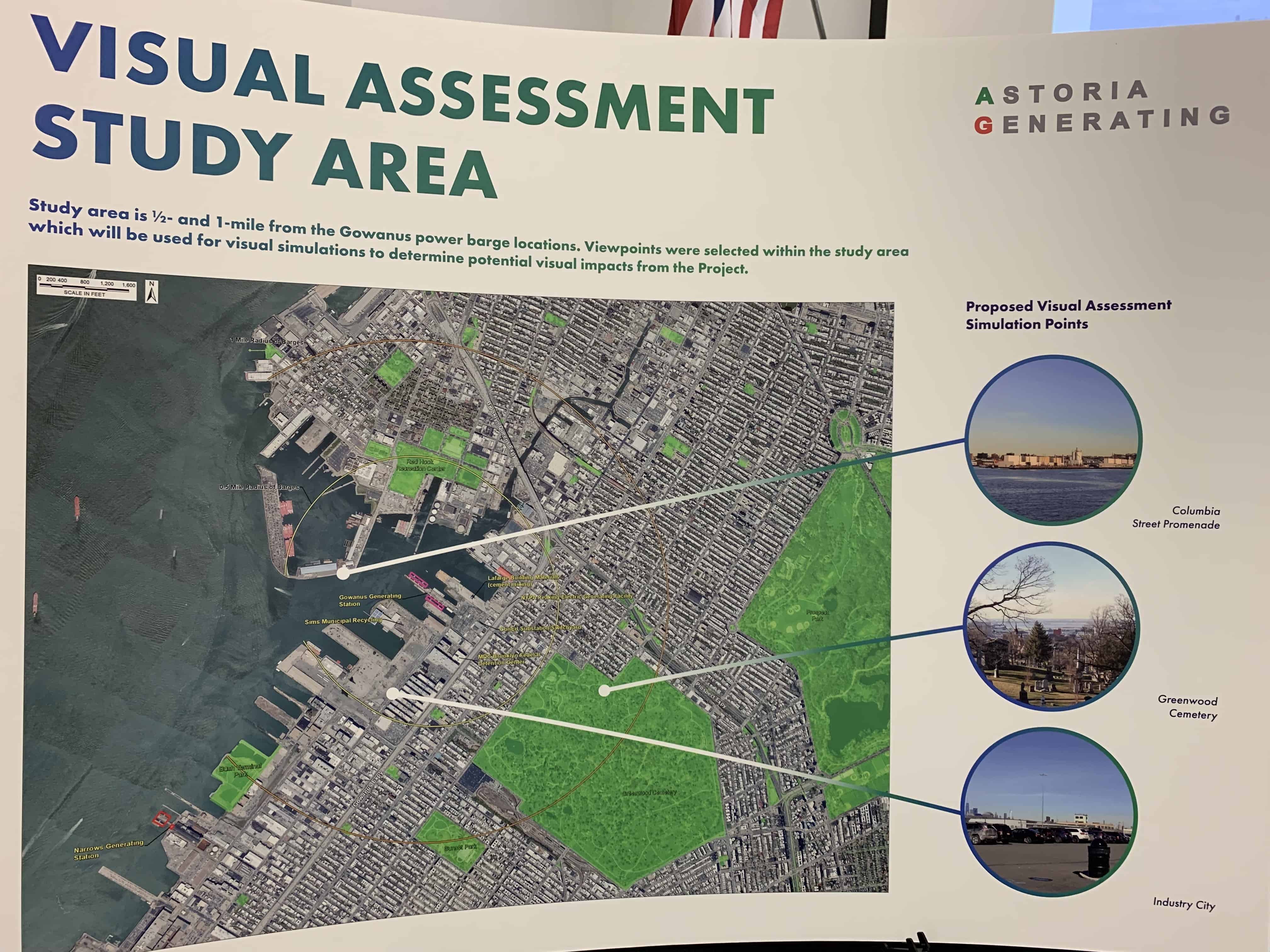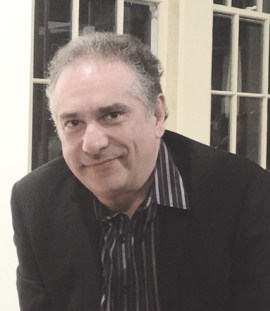Two electric generating stations on six power barges, floating along the shoreline of Gowanus and Sunset Park, are looking to be replaced and updated by 2024.
Collectively they provide enough energy between one and 1.5 million residential customers in Brooklyn. The barges continued operating during Superstorm Sandy in 2012 and were only offline for two hours, due personnel evacuations, according to John Reese from Astoria Generating Company (AGC). They have been the first units back on line to restore power during blackouts.
Four of the six barges burn natural gas as their primary fuel and, as required, have ultra low sulfur diesel as a back-up fuel. The remaining two power barges burn only ultra-low sulfur diesel.
THE GAMEPLAN
AGC, who owns the acres and piers at the Gowanus Generating Station (located at 26th Street), is proposing to replace the older, less efficient dual-fuel generation and higher emitting units there with new, more efficient natural gas generation on two barges (versus the current four). Reese emphasized at the third public meeting, held on July 18, that technology that’ll be available in 2023 would be implemented within these structures.
“These are 50-year-old units,” Reese said. “We don’t think it makes a lot of sense to invest in technology that is inefficient at this point.”
The plan at Gowanus – which is the world’s largest floating power plant – would result in a megawatt rating of 610 MWs, about 30 MWs less than what’s currently being generating. The station would also be retrofitted with more efficient units that’ll reduce potential emissions of atmospheric pollutants, like carbon monoxide, sulphur dioxides and nitrogen dioxides, while improving resiliency using existing gas infrastructure.
AGC also plans to shut down the generating units at Narrows (located one mile south at 53rd Street), reducing the total number of power barges from six to two. The company believes this project will provide cleaner electric generation for the two neighborhoods and will support expanded renewable energy production, transmission and distribution over time.
AGC noted at the meeting that the facility would be operating less than 8,760 hours a year and would have a less than 10-minute start time. Black start capabilities for this project will be provided by storage batteries instead of the current, conventional diesel-powered engines. The batteries will also provide power for station operation, totaling 3 MWs.
In summary, the two new power barges – with four combustion turbines on each barge – are proposed to:
- Be nearly twice as efficient as the existing 1971 technology, reducing price and emissions New York City wide
- Consume nearly half of the amount of gas per MW/hr generated
- Create no need for additional gas infrastructure
- Continue providing the reliability and resiliency functions of the existing units
- Further reduce unit start times and assist in addressing system volatility due to the increase in intermittent renewable resources
MOVEMENT
A majority of materials, including the barges and combustion turbines, would be constructed offsite and delivered via water. Combustion turbines will be connected to existing fuel/electrical infrastructure at the Gowanus site with minimal modifications and installed in a short amount of time.
Since these float, no piles have to be vibrated out to remove the existing barges. When the Gowanus units are no longer needed, the barges can be disconnected and removed within a few days, without leaving substantial abandoned infrastructure in the community.
In terms of removing the power barges from the Narrows site, AGC will make arrangements with an appropriate marine towing service. At that time the barges would be towed away from the Narrows pier for proper disposal.

PUBLIC COMMENT CONCERNS
The Sierra Club pointed out that AGC doesn’t acknowledge the likely displacement of renewable generation or energy storage that’d be installed.
“The proposed facility must be evaluated for what it is: a large new fossil gas plant that would displace renewables and storage and generate harmful emissions for decades to come,” they explained in their comments. “The proposed plant must be assessed on its own merits and not in conjunction with the retirement of two existing plants that must control emissions by 2023-2025 in any event.”
AGC acknowledged the above and responded, “The repowered facility, with substantially cleaner pound-per-megawatt-hour emissions, would displace other higher emitting, less efficient fossil fuel units within the City, and will meet reliability and resiliency needs of the community.”
They said they will provide a detailed analysis of air pollution impacts and a complete environmental justice analysis, as required.
UPROSE, an organization that promotes sustainability and resiliency in Brooklyn, told this paper that they’re advocating for energy storage.
“We would like to see any gas-powered plant shut down, and would like to see energy storage in place instead,” UPROSE Executive Director Elizabeth Yeampierre said.
AGC noted in the preliminary scoping study that it’s exploring an energy storage project at the Narrows facility, outside the Article 10 process in conjunction with the Con Ed Request for Proposal for Battery Storage (released on July 15), which solicits up to 300 MW of storage projects.
WHAT’S NEXT?
AGC addressed a multitude of comments that were submitted in June by the Department of Public Service, Department of Health, Department of Environmental Justice, UPROSE and Sierra Club. The next step is the stipulation process for detailed studies. Those scientific assessments include: communications; land use; cultural resource study; public health, safety & security; transportation; terrestrial ecology and wetlands; electric system; water resources & aquatic ecology; socioeconomics; geology, seismology & soils; and more.
Under Article 10 of the Public Service Law, an application must evaluate fully the impacts of NYS power plants on the environment and health within communities designated as potential environmental justice areas under regulations of the Department of Environmental Conservation.
For more information about the project, visit repoweringbrooklyn.com. To submit questions or concerns, call 833-617-9547 or email info@repoweringstation.com.
Top photo by DeGregorio
Author
-

George Fiala has worked in radio, newspapers and direct marketing his whole life, except for when he was a vendor at Shea Stadium, pizza and cheesesteak maker in Lancaster, PA, and an occasional comic book dealer. He studied English and drinking in college, international relations at the New School, and in his spare time plays drums and fixes pinball machines.
View all posts
George Fiala has worked in radio, newspapers and direct marketing his whole life, except for when he was a vendor at Shea Stadium, pizza and cheesesteak maker in Lancaster, PA, and an occasional comic book dealer. He studied English and drinking in college, international relations at the New School, and in his spare time plays drums and fixes pinball machines.










